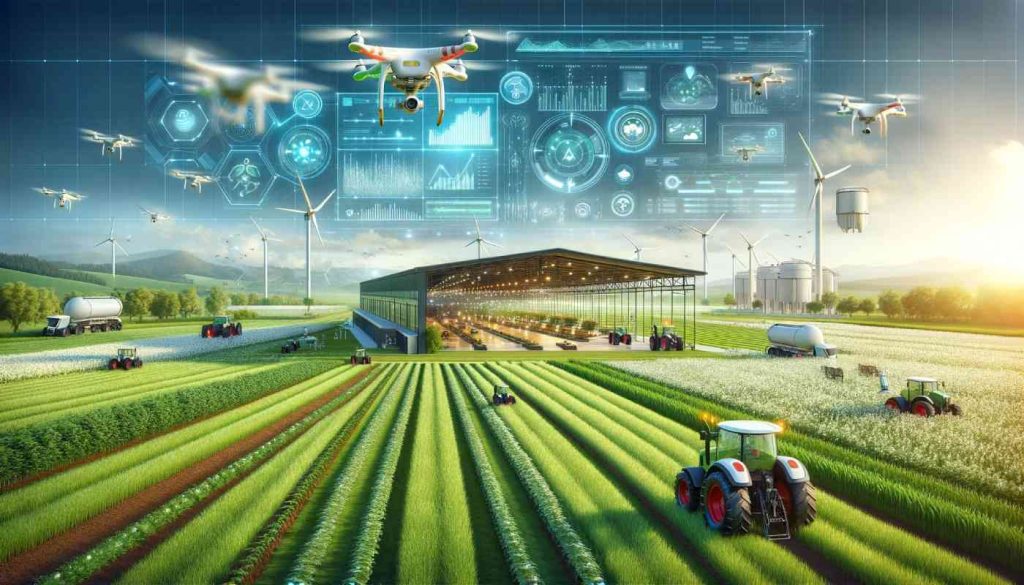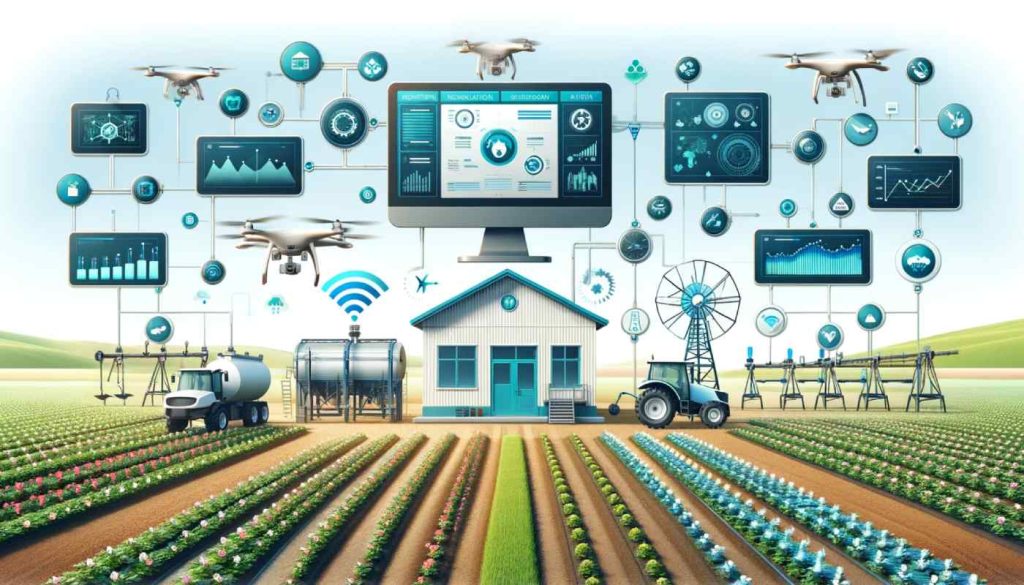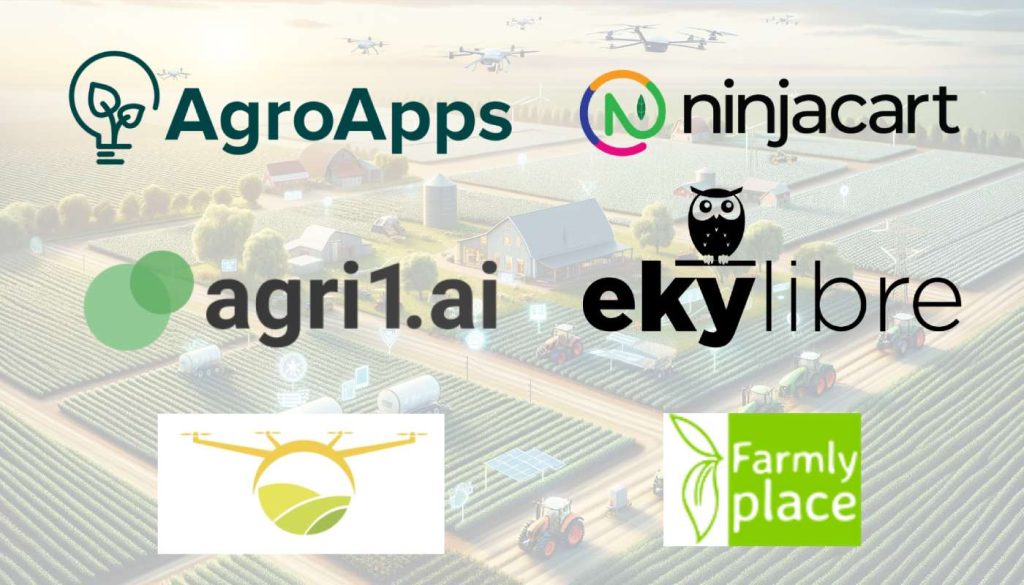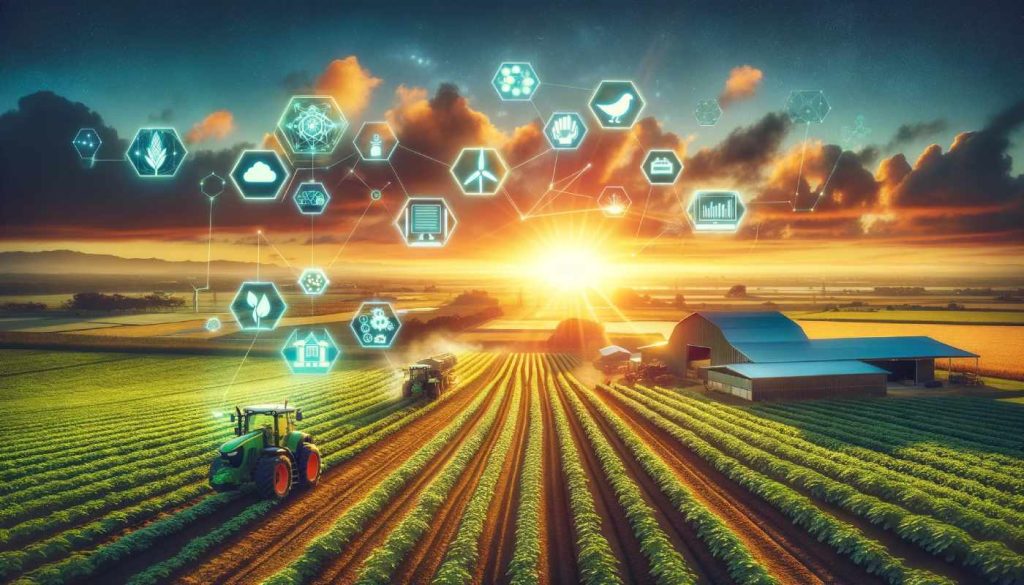Introduction
In recent years, the agricultural sector has seen a gradual yet significant shift towards incorporating technology, leading to the emergence of “Farming as a Service” (FaaS). This concept brings a modern twist to traditional farming, integrating technological advancements to improve efficiency and sustainability.
Understanding the Role of Technology in Modern Agriculture
FaaS represents an approach where services related to farming – from crop management to equipment leasing – are provided through technology-driven solutions. It’s a model that combines the familiarity of traditional agriculture with the benefits of modern technology, offering a more balanced and realistic view of farming’s future.

This exploration into FaaS is not about endorsing or selling the idea; it’s about presenting a clear, factual overview of how technology is being integrated into agriculture. We will look at the opportunities this model presents, such as increased efficiency and potential cost reductions, as well as the challenges it faces, including the need for infrastructure development and possible resistance from traditional farming communities.
This exploration into FaaS is not about endorsing or selling the idea; it’s about presenting a clear, factual overview of how technology is being integrated into agriculture. We will look at the opportunities this model presents, such as increased efficiency and potential cost reductions, as well as the challenges it faces, including the need for infrastructure development and possible resistance from traditional farming communities.
As we delve into the specifics of FaaS, we aim to provide a comprehensive understanding of its role in contemporary agriculture. This includes examining the technologies that are driving this change, their application in various farming practices, and the global impact of this trend. Additionally, we will highlight some of the key players in this field, illustrating the diverse ways in which technology is being harnessed to reshape farming.
What is Farming as a Service?
Integrating Technology into Traditional Farming
“Farming as a Service” (FaaS) is a model that integrates advanced technologies into traditional farming practices, offering a suite of services aimed at making agriculture more efficient, sustainable, and profitable. This concept borrows from the ‘as a service’ models prevalent in the IT industry, such as Software as a Service (SaaS), and applies it to farming.
At its core, FaaS is about using technology to assist in various farming activities. This includes leveraging data analytics, IoT devices, and AI to optimize farm operations. The services under FaaS can be broadly categorized into three segments:
Additionally, the market segments by delivery model (subscription and pay-per-use) and end-user (farmers, government, corporate, financial institutions, and advisory bodies).
The adoption of FaaS is fueled by the growing need for sustainable farming practices and the increasing demand for food due to the global population rise. By incorporating modern technology, FaaS is poised to transform the agricultural landscape, making it more resilient to challenges such as climate change, labor shortages, and the rising cost of farming inputs.
The Role of Technology in Farming as a Service (FaaS)
Emerging Technologies Reshaping Agriculture
In Farming as a Service (FaaS), a range of advanced technologies play crucial roles in enhancing agricultural efficiency and productivity.

These technologies not only aid in day-to-day farm operations but also contribute to long-term sustainability and data-driven decision-making in agriculture.
These technologies not only aid in day-to-day farm operations but also contribute to long-term sustainability and data-driven decision-making in agriculture.
The integration of these technologies into farming practices represents a significant leap forward in agricultural efficiency. By providing farmers with detailed insights and automating many of the labor-intensive processes, FaaS makes farming more sustainable and productive.
Global Reach: FaaS in Different Continents and Countries
FaaS: A Worldwide Phenomenon in Agriculture
The adoption of Farming as a Service (FaaS) is not confined to a single region but is a global phenomenon, with varying degrees of implementation across continents and countries.

The integration of technology in agriculture has found its way into various parts of the world, each adapting it to their unique agricultural landscapes and needs.
The integration of technology in agriculture has found its way into various parts of the world, each adapting it to their unique agricultural landscapes and needs.
The global spread of FaaS is facilitated by the universal need to make agriculture more productive, sustainable, and climate-resilient. This widespread adoption also points towards a future where technology-driven farming becomes the norm rather than the exception.
The geographic diversity in the adoption of FaaS underscores its versatility and adaptability to different farming conditions and challenges. It’s a testament to the fact that, regardless of location, technology has a crucial role to play in the future of agriculture.
FaaS Companies and Their Technological Solutions
Innovators at the Forefront of Agricultural Technology
The Farming as a Service (FaaS) landscape is rich with innovative companies that are reshaping agriculture through technology.

Here are some notable examples:
Here are some notable examples:
These companies exemplify the diverse ways FaaS is being implemented worldwide. They not only provide innovative solutions but also address various challenges in the agriculture sector, from enhancing productivity to ensuring environmental sustainability.
Market Growth and Future Prospects of FaaS
Expanding Horizons in Agricultural Technology
The Farming as a Service (FaaS) market is witnessing significant growth, with projections indicating a bright future.

Here’s a look at the key data and trends shaping this market.
Here’s a look at the key data and trends shaping this market.
This data highlights the dynamic nature of the FaaS market and its potential to revolutionize agriculture with technology-driven solutions, making farming more efficient, productive, and sustainable.
Challenges and Limitations of Farming as a Service (FaaS)
Navigating the Hurdles in Agricultural Technology
While Farming as a Service (FaaS) offers numerous benefits, it also faces several challenges and limitations that need to be addressed for widespread adoption:
Addressing these challenges is crucial for the successful implementation and growth of FaaS. Solutions could include educational initiatives, subsidies or financial support for initial investments, development of user-friendly technology, and ensuring robust infrastructure in rural areas.
The Future of Farming as a Service
Embracing a New Era in Agriculture
As we conclude our exploration of Farming as a Service (FaaS), it’s clear that this model represents a significant shift in agricultural practices. FaaS, with its integration of advanced technologies like IoT, AI, drones, and precision farming tools, is not just a trend but a fundamental evolution in how farming is approached.
The potential benefits of FaaS are immense. By making farming more efficient, sustainable, and data-driven, FaaS promises to increase crop yields, reduce environmental impacts, and make farming more economically viable. The growth projections for the FaaS market, expected to reach $12.8 billion by 2031, reflect the growing recognition of these benefits.
However, the journey ahead is not without challenges. Overcoming resistance from traditional farming communities, addressing infrastructure limitations, managing data effectively, and making technology accessible and affordable are critical steps toward realizing the full potential of FaaS.
Looking forward, the future of farming appears to be one where technology and tradition converge, leading to a more productive and sustainable agricultural sector. As technology continues to advance and adapt to the needs of farmers, FaaS is poised to play a pivotal role in shaping the future of agriculture.
Farming as a Service is more than just a technological innovation; it’s a new chapter in the story of agriculture, one that holds the promise of a better, more efficient, and sustainable future for farmers and consumers alike.
Further sources used for this blog article: Market research IP, Market research SkyQuestt
